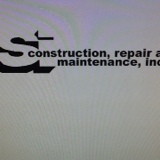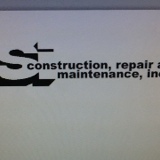Opening
-
Document No.
-
Audit Title
-
Client / Site
-
Conducted on
-
Prepared by
-
Location
-
Personnel
Information
OVERVIEW OF TOPIC
-
Sprains and strains are the most common causes of lower back pain. The back can be injured by improper lifting of moderate to heavy objects, falling, auto accidents, and sports activities. But of these, lifting improperly is the largest single cause of back pain and injury. Luckily, construction workers can prevent back pain by knowing and using proper lifting techniques. Safe lifting is a special concern on the construction job site because lifting is a major part of the job. Without lifting,through either physical or mechanical means, materials could not move around the site to build the project.
-
There is no OSHA regulation on safe lifting, but the subject is always near the top of the list of concerns because about 17 percent of all occupational injuries or illnesses are from over exertion in lifting.
-
Back disorders are frequently caused by the cumulative effects of faulty body mechanics: excessive or repetitive twisting, bending and reaching; carrying, moving, or lifting loads that are too heavy or too big; staying in one position for too long; poor physical condition; and poor posture.
-
Prolonged sitting also stresses the body, particularly the lower back and the thighs, and may cause the lower back (lumbar) region to bow outward if there is inadequate support. This abnormal curvature (called kyphosis) can lead to painful lower back problems, a common complaint among drivers of dump trucks, back hoes, and other heavy construction equipment.
-
Other factors which are contributors to back injuries include the natural degeneration of the back due to aging; inactivity both at work and at home; seasonal activity undertaken without prior physical conditioning; stress and vibration.
EMPLOYEE TRAINING
-
There are no specific employee training requirements on safe lifting, but because back injuries due to improper lifting are a commonly recognized hazard by OSHA in ergonomic guidelines, OSHA may cite construction companies under the General Duty Clause. Fortunately, the basis of safe lifting are well known and easy to understand. Administrative controls, like teaching safe lifting and work techniques, are proven way to reduce employee lost time and workers' compensation costs.
In addition, engineering controls, like limiting weights to be lifted, having people lift in pairs and teams, or using materials handling equipment as much as possible to assist in lifting, can also be used to reduce or eliminate problem lifting tasks. -
General lifting instructions stress these key aspects of safe lifting above all others:
1. SIZE UP THE LOAD
2. PLAN AHEAD, MAKING SURE YOU HAVE A CLEAR PATH TO CARRY YOUR LOAD
3. BEND YOUR KNEES
4. PLACE YOUR FEET CLOSE TO THE OBJECT AND CENTER YOURSELF OVER THE LOAD
5. GET A SOLID HANDHOLD
6. LIFT STRAIGHT UP AND SMOOTHLY, LETTING YOUR LEGS DO THE WORK INSTEAD OF YOUR BACK.
With the above lifting techniques as the basics, these additional points should be stressed.
1. DO NOT TWIST OR TURN YOUR BODY ONCE YOU HAVE MADE THE LIFT
2. SET LODS DOWN PROPERLY, ONCE AGAIN BENDING YOUR KNEES
3. ALWAYS PUSH OBJECTS INSTEAD OF PULLING THEM
4. KEEP THE LOAD AS CLOSE TO YOU AS POSSIBLE
5. SPLIT LARGER LOADS INTO SEVERAL ONES IF YOU CAN
6. IF ITS A LONG OR AWKWARDLY SHAPED LOAD, GET SOME HELP
7. NEVER RUN WITH A LOAD IN YOUR HANDS
Sign in sheet
SIGN OFF SHEET
-
This sign off sheet documents the employees who have taken part in a training session on Back Safety & Lifting.
-
The session covered safe lifting techniques, including the following safe lifting rules:
1. Size up the load before trying to lift it
2. Bend the knees
3. Do not twist or turn your body once you have made the lift
4. Make sure you can carry the load where you need to go before attempting to move it
5. Set the load down properly
6. Always push, not pull the object when possible. -
Select date
-
Add signature
-
Add signature
-
Add signature
-
Add signature
-
Add signature
-
Add signature
-
Add signature
-
Add signature
-
Add signature
-
Add signature









